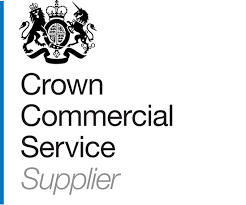Of the latest and greatest platforms that have transformed the world of e-learning over recent years, performance management systems have certainly made their mark. Designed to improve the performance, productivity, and overall efficiency of employees and teams alike, performance management systems provide a structured and data-driven approach to employee evaluation and development. Although many will be already aware of the key benefits associated with performance management systems, there are some lesser-known benefits to consider. Join us as we outline five benefits that you may not have considered.
What is a performance management system?
A performance management system is a platform that allows users to carry out performance management processes and activities in an online environment. Users can monitor and evaluate progress, set clear expectations and objectives and support employee development in a structured environment, with records and materials housed in one centralised platform.
If you’d like to find out more about performance management systems, along with discovering some of the wider-known benefits, read our ultimate guide.
What are some lesser-known benefits of performance management systems?
1. Better succession planning
When an organisation prioritises internal hiring and promotion over external candidates, there are a number of associated benefits, including reduced hiring costs, better employee ROI, higher employee satisfaction and lower staff turnover. However, only 35% of organisations have a formalised succession planning process for critical roles, which can result in hiring the wrong candidates, employee frustration and losing internal talent to rival companies.
Succession planning requires long-term focussed processes and the right system in place to support activities. An effective performance management system can serve as a valuable aid to succession planning that can help HR teams and senior management teams easily identify employees who consistently perform well and deliver outstanding results.

Through features such as performance reviews, competency scales, and evidence banks, managers can identify those who demonstrate potential and put initiatives in place designed to nurture these employees so that they can acquire and develop the relevant skills required to move forward in their careers. Managers may also choose to create PDPs to support succession planning, including courses designed to improve leadership skills.
Additionally, with Totara Perform, Hubken’s powerful performance management platform, managers and HR teams can utilise 360 feedback tools to gather feedback from not just managers, but across an entire workforce. With this feedback, employees and senior team members can gain a better understanding of how potential candidates are viewed by their peers; identifying whether they have demonstrated relevant skills.
2. Transparent performance evaluation
When performance reviews and evaluation sessions are carried out offline, these practices can often be one-sided, with employees having a poor understanding of what is expected of them and why. Additionally, access to notes and evidence gathered from offline performance review sessions isn’t always shared with employees unless requested. With a performance management system, activities and assessments are recorded online, with both employees and managers having full visibility. Employees can easily revisit evidence logs for one-to-one sessions to remind themselves of what was discussed and any objectives that were created.
With Totara Perform, admins can create and assign frameworks designed to manage competencies. Competencies allow managers to map skills to employees or groups/teams and set up achievement paths to decide how competencies are achieved. With this functionality, employees have a better understanding of what is expected of them and how they will be evaluated.
3. Greater sense of ownership and accountability
With full visibility of their progress, recorded notes from feedback sessions, and full transparency around performance expectations and objectives, employees have a greater sense of ownership over their role and performance. Studies have found that 69% of employees don’t feel like they’re living up to their potential at work, but with the right opportunities for L&D in place employees can take ownership of their development in order to progress in their careers.
With Totara Perform’s goal-setting functionality, admins or managers can assign goals and targets to individual users which are then displayed on dashboards, with elements such as percentage wheels designed to visually represent progress. With clear markers and evidence of progression, employees can hold themselves accountable for any lack of progress and take relevant action.
4. Identifying strengths and weaknesses at an organisational level
Traditional performance management processes allow managers to carry out performance reviews at an individual level or at a departmental or team level. However, conducting a wider analysis of employee performance across the entire organisation via traditional offline methods would require hours of manual admin and contributions from multiple staff members.
Reporting functionality and analytics tools in an effective performance management system allow admins to gather performance data from across the entire site and collate it to inform an analysis of the progression and performance across an entire organisation. Data can be pulled from performance activities and configured through reporting tools so that admins can easily identify patterns which may indicate strengths or weaknesses regarding organisational operations.
For example, if one department in particular appears to be falling behind in its competency progression or L&D performance, team leaders can put measures in place, such as PDPs or learning plans, to improve operations in a data-driven manner.

5. Strengthen relationships between employees and managers
According to 86% of employees and executives, poor collaboration and inefficient communication are the main reasons for workplace failures. One of the biggest benefits of performance management systems that isn’t always taken into consideration is the ability to strengthen relationships between employees and managers by creating better opportunities for communication and collaboration.
Through regular feedback sessions, scheduled one to ones and the right tools in place to enable a mutual understanding of objectives and activities, along with better guidance on how to achieve goals, employees and managers can enjoy a collaborative working relationship.
Discover Totara Perform: The only performance management system you’ll ever need
Our all-in-one performance management system, Totara Perform, is a powerful platform with all the functionality and tools you need to get the best results and productivity out of your employees. Visit our dedicated product page to find out more about Totara Perform or book a demo to discover the many benefits of using our powerful performance management system.

Book a Totara Perform demo
Learn first-hand how a performance management system from Hubken could enhance your L&D strategy on an impressive scale. Book your free demo today.
.png?width=900&height=125&name=Slim%20blog%20CTAs%20(12).png)




